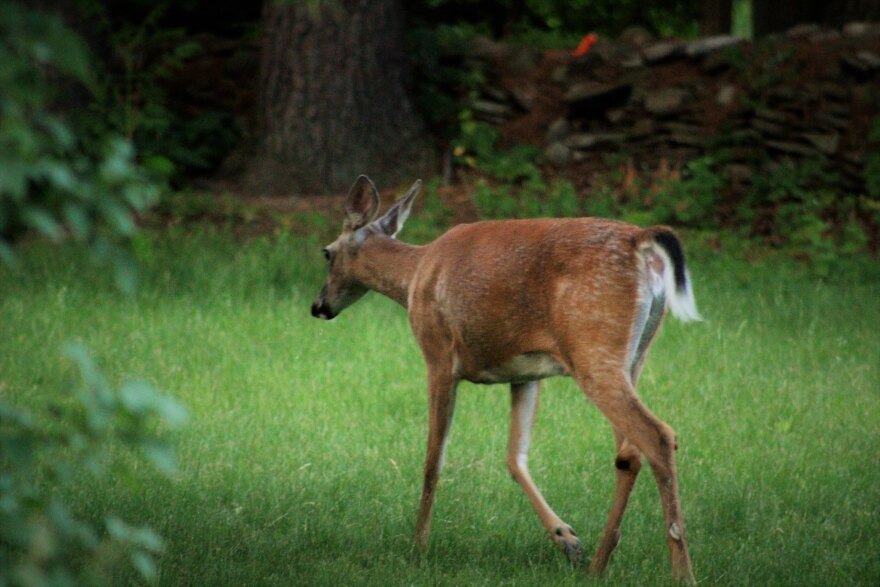Every other Friday on Morning Edition NHPR’s Sam Evans-Brown tracks down answers to questions about the environment and outdoors for our listeners in a segment we call “Ask Sam.”
Christie in Franconia asks: In the forest the male deer leave this spot, they scratch it out and then they put their hoof mark there to say, ‘Girls, you know, here I am.’ But they have it all over the woods. Like there’s like 10 of them. How does the female deer, meet the male deer? How do they know to meet up?
The spots that Christie is referring to are called scrapes, and the males make them during the mating season for deer, called the rut, which happens in November in New Hampshire. At the extreme risk of anthropomorphizing, imagine that each of these scrapes are like a local bar, and the deer are folks who are patrolling, looking for others who are single.
How do you know who’s single? In the pre-app era, there was a lot of looking for little clues. For instance, scent.
“She may catch your eye or may not catch your eye, but what happens is when she walks by she smells really good, and you’re like okay, now I’m going to walk over and investigate a little bit,” explains John Annoni, a hunter who runs an outdoor education camp called Camp Compass in Pennsylvania, which aims to get disadvantaged city kids outside.
The same thing happens with deer, except, “her perfume happens to be urine, and his perfume happens to be urine.”
Christie notices the hoof marks in a scrape, but what she doesn’t notice is that both bucks and does are peeing in those scrapes as well. And the bucks also rub scent glands around their eyes and on their forehead on nearby trees and branches more at head height. The scrape is really just a visual signal that a doe should come over and give a sniff and get a sense of whose territory she’s in. And then she’ll leave her own scent, to let the male know the same.
The females are sniffing around for the strongest, most evolutionarily fit males. And the males spend basically all day just patrolling around the various scrapes they have made in their territory, sniffing to see which females have passed by.
Thinking back to our singles in a bar metaphor, just as humans are looking for signs that others in the bar might be receptive to their advances, bucks are sniffing for does that are in estrus (in heat). And they have to be constantly patrolling their territory because estrus is a very brief window: it lasts only 24 hours or so.
So when a buck encounters a doe who is within that window, he won’t let her out of his sight. Hunters call that lockdown.
“What do we call that in real life? We get engaged. He’ll lock her down, and he’ll stay with her. He’ll stay with her until she’s bred,” says Annoni.
If you have listened or read a few of these segments, you’ll recognize that I’m often searching these questions for some sort of broader lesson. For me, looking for and reading deer scrapes is part of a general practice of reading the forest. When you go for a walk, don’t just turn off your brain: look for signs of the complicated lives of the creatures that share that space with you!
(And their relationship drama, obvi.)
Sam Evans-Brown, is host of NHPR’s Outside/In which you can subscribe to where-ever you get your podcasts. If you’d like to submit a question you can record it as a voice memo on your smartphone and send it to oustidein@nhpr.org, OR call the hotline, 1-844-GO-OTTER.








